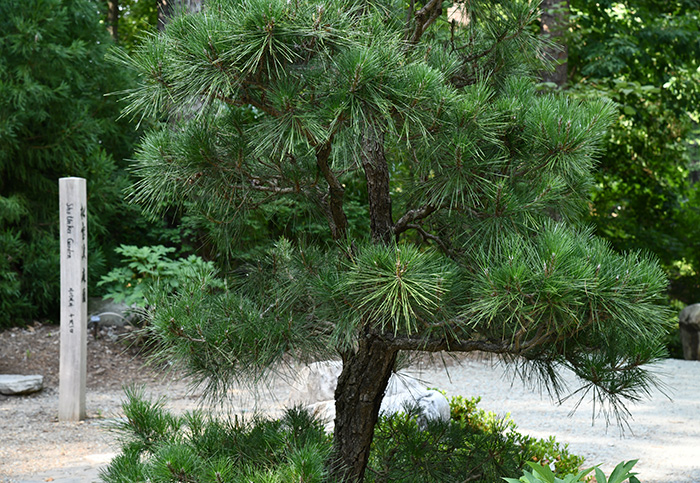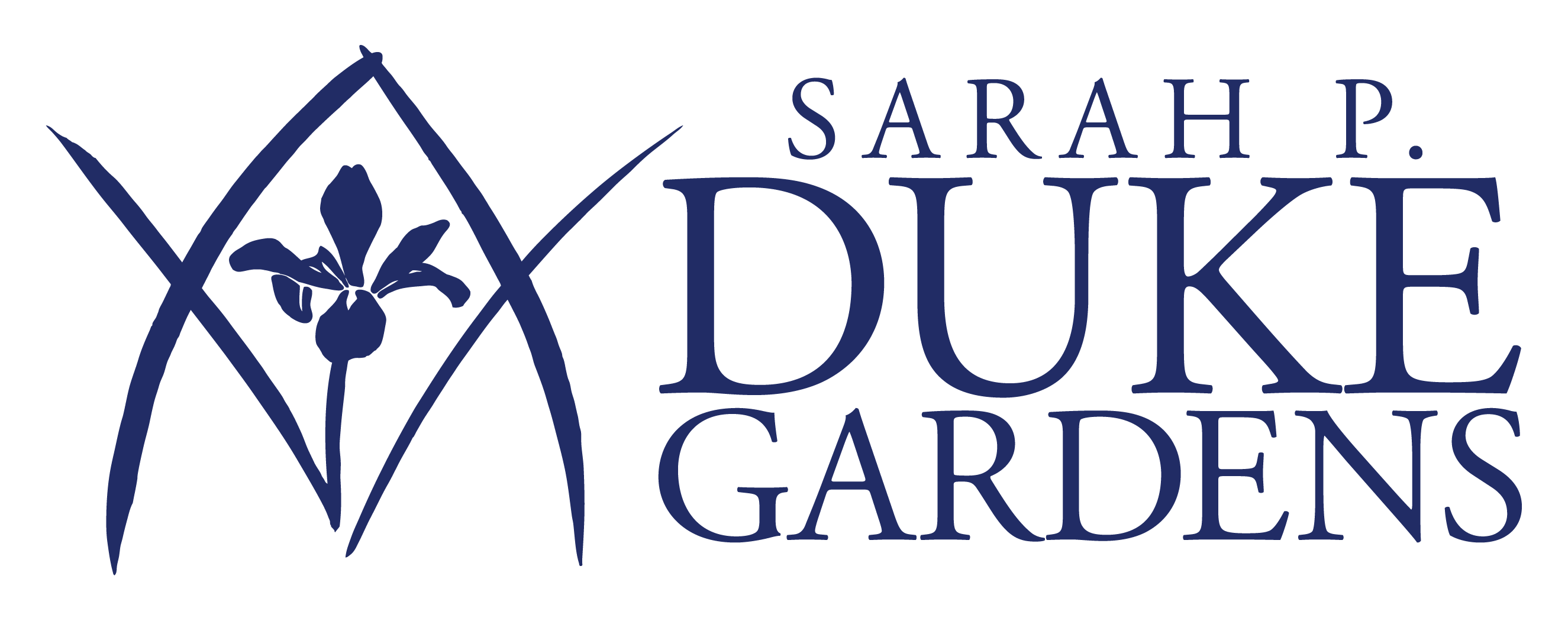
Photo by William Hanley.
Botanical name: Pinus thunbergii
Common name: Japanese black pine
Family name: Pinaceae (Pine Family)
Plant type: Ornamental tree
Native range: Japan and Korea
Location in Duke Gardens: Culberson Asiatic Arboretum
When folks are asked to think of a Japanese garden, one of the initial images that comes to mind is the iconic, meticulously trained Japanese black pines, Pinus thunbergii. While these trees provide some of the majestic framework for Japanese gardens throughout the world, they are unfortunately vulnerable to numerous pests and diseases here in the Southeast. From blights to fungus, caterpillars and hungry moths, these pines battle the pests of the horticultural world year-round. However, with a watchful eye and a bit of know-how, they too can provide the architectural highlight to your home garden.
One pest that I see quite a lot throughout the summer months is the redheaded pine sawfly caterpillar (Neodiprion lecontei). Fun fact: It is not actually a caterpillar (so BT or other gut disturbing pesticides won’t affect them in the least). Rather, these little communal party animals are fly larvae that feed on fresh pine needles in large groups. They tend to have three generational hatchings throughout the summer, but luckily they are extremely punctual, even showing up on the very same day the following year on some of our pines here. I have found that the hatchings here at Duke Gardens occur the last week in June, the last week in August, the first week in September, the last week in September, and last year I actually found some late bloomers on October 23!
These insects can defoliate the majority of an 8-foot pine in a matter of a day or two, so catching them early is key. If they do turn your tree in to a larvae salad bar, don’t stress; the tree can usually recuperate the following year. The needles will not grow back until the next spring, but you should be able to see the buds swelling in late fall. Recognize the symptoms and act quickly to give your pines some relief.
Early signs of emergence are needles that are brown, thin and wispy. Further evidence of an infestations are large swaths of the pine missing its needles. The insects are easy to spot when full grown, but they also do the most damage at this stage. When approached, they rear back and exude a tiny droplet of sap from their mouths.
The best way to control these is to remove them by hand. As unpleasant as this may be, it’s the most effective and environmentally friendly approach. The only other option would be an application of systemic pesticides.
Through a combination of a watchful eye and thoughtful horticultural practices, this pest can be holistically managed. Keeping your pines healthy by practicing proper plant siting and following a regimented fertilization schedule will allow them to bounce back from any damage these caterpillars may cause.
